The Langma Advanced SL Disc Offers Everything Any Rider Would Want From a High-Performance Road Bike
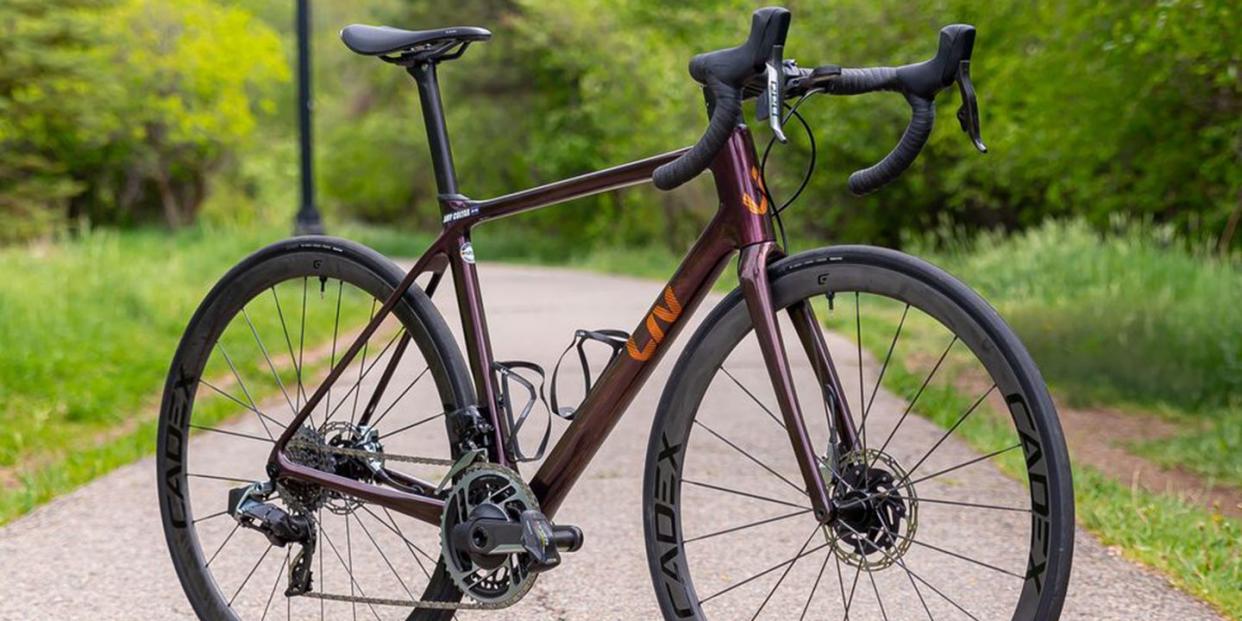
The Takeaway: The Langma Advanced SL 0 offers everything any rider would want from a high-performance road bike.
Lighter and stiffer frames than previous generation Langmas
Eleven models offered globally. Four models—priced $2,500 to $10,000—come to the USA
No more integrated seat mast for top-of-the-line models. The Langma SL is now fitted with a more versatile seatpost.
Sold in five sizes, from XXS to Large. All use 700c wheels.
Price: $10,000
Weight: 15.0 lb. (M)
The latest version of Liv’s Langma, the brand’s all-around road-racing bike, launches today. The new bike is lighter and more efficient than the previous generation and, in top-of-the-line guise, is the bike you’ll find under the Liv Racing WorldTeam athletes like Ayesha McGowan.
A Liv representative states the new Langma should land in shops sometime between the end of July and early August. Below you will find a ride review, as well as a complete overview of the new bike.
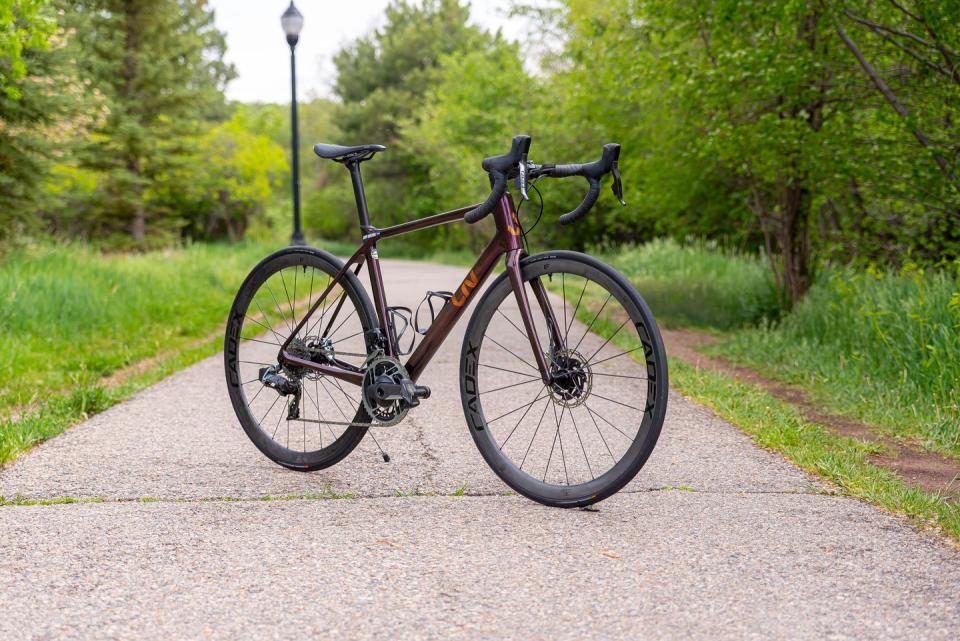
Liv Langma Advanced SL 0 - Ride Impressions
Before I provide my impressions of the new Langma, I want to offer you some context about my experience and motivations.
I’m a bit over 175cm tall (5-foot-9) and weigh about 60Kg (132 lb.). While I dabble in bike racing, I do not consider myself a bike racer. I consider myself more of an endurance rider who loves epic days in the saddle and riding in beautiful places. But even though I am not a racer, I still like to go fast, participate in group rides, and chase Strava segments in my hometown of Durango, Colorado.
—Liv Langma Advanced SL 0 Build Details—
Shift/Brake Levers: SRAM Red eTap AXS
Front Derailleur: SRAM Red eTap AXS
Rear Derailleur: SRAM Red eTap AXS
Crank: SRAM Red AXS Power Meter
Cassette: SRAM Red XG-1290, 10-33
Brake Calipers: SRAM Red hydraulic
Brake Rotors: SRAM Centerline XR 160mm (front), 140mm (rear)
Wheels: Cadex 36, 22.4mm inner width
Tires: Cadex Race Tubeless, 25mm
Handlebar: Liv Contact SLR
Stem: Giant Contact SLR
Seatpost: Giant Variant SLR
Saddle: Liv Alacra SLR
My bikes are a Colnago C60 with rim brakes and a Tarmac SL6 Disc—both of which are considered race bikes like the Langma. I have many thousands of miles on both bikes, including a 10-day trip from Portland to San Francisco I took on the Tarmac SL6.
In addition to those bikes, I’ve had a chance to ride many of the latest and greatest road bikes because my husband is Matt Phillips, Bicycling’s senior test editor: We ride the same frame size, and (at his request) I often ride his test bikes and offer my feedback.
My first ride on the Langma was a quick shakedown on one of my regular after-work routes. It’s a relatively high-speed ride because it’s flatter with only about 700 feet of elevation gain.
It was a blustery day, and I immediately noticed the aerodynamic capabilities of the Langma while spinning in the afternoon spring winds. I forgot that I was riding into a headwind, and I didn’t feel like I got blown around on the Langma like I have on other race bikes I’ve ridden. As I continued the loop toward home, there’s a short rise where I stood up to sprint. The Langma accelerated quickly, and the transfer of power felt highly efficient.
—Liv Langma Advanced SL Disc Red Details—
On a different day, I took the Langma on a longer ride with 3,600 feet of elevation gain. The highlight of this ride is a sinuous out-and-back section of road that climbs—and then descends—over 1,000 feet in three miles, with several grades exceeding 15 percent with the occasional 20-plus percent pitch for extra flavor.
When I hit the first steep ramp and had to get out of the saddle, the Langma felt superb: crisp and nimble. As the pitch leveled off and I got back in the saddle and resumed my spin, the Langma felt light and easily kept its momentum up the climb.
I reached the end of the road and turned around to start my descent. The road has sharp and wide-open turns, several switchbacks, and little in the way of straight road.
Down this challenging descent, the Langma’s predominant feel is that of balance. While it is undoubtedly a sharp-handling bike that steers as a race bike should—with quickness— its front end is biased towards stability rather than ultra-reactivity (which can feel twitchy to some riders). It dropped into each turn smoothly and held its line well, but I needed to press the handlebar slightly harder than the Tarmac to get it to arc through the tightest turns.
Farther along on my ride, I came to a straight steep downhill section that pushed my speed up to nearly 50 mph. In the drops and folded into a tuck, I felt confidently stable on the Langma, more so than I do on most other race bikes I’ve ridden down this same descent.
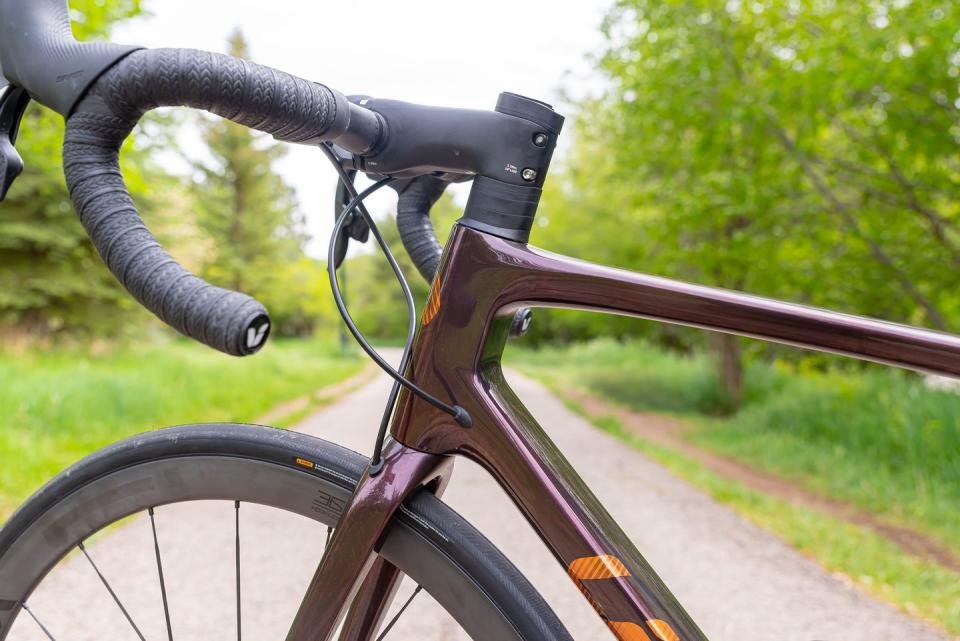
Overall, I found the Liv handled more like my Colnago than my Tarmac. The Langma swoops rather than darts through corners and continually communicates a reassuringly stable feel.
I found the Langma to be one of the smoothest bikes I’ve ever ridden on roads, both paved and dirt. The ride is glassy, and it damps vibrations well. And when I encountered bigger bumps, I felt a pleasant amount of compliance.
Another thing I loved about the Langma is how perfect it felt straight from the box.
A few years ago, I had a professional bike fit by Paraic McGlynn at Cyclologic, and it completely revolutionized my comfort and performance on the bike. Among his recommendations were shorter cranks, a narrower bar, and a wider saddle.
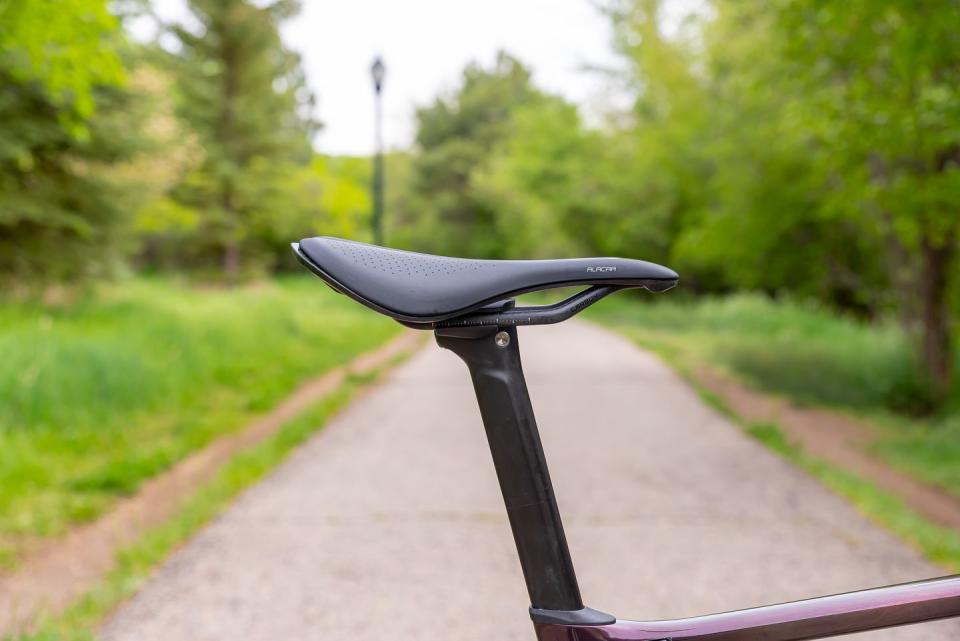
The great thing about the Langma is that it comes with all the component dimensions that McGlynn recommended off the shelf. That’s not the case with a Trek Émonda, Specialized Tarmac, or almost any other well-regarded stock race bike in my size. Buying this bike would save me a tremendous amount of time and money because I wouldn’t have to change any parts to achieve my fit.
I’ve had the opportunity to ride many different road bikes over the years, and I’ve never found a bike that fit me as well out of the box as the Liv Langma. In my opinion, this is one of the benefits of buying a bike from a women-specific brand that was designed from the ground up by a team of women.
In summary, the Langma is the kind of bike I love to take on demanding rides. It offers all the things I want in a high-performance road bike: speed, lightness, comfort, stability, and efficiency. I’m also thrilled I can install 32mm tires and ride it on some of my favorite dirt and gravel roads. The Langma Advanced SL Disc Red is one of the best bikes I’ve ever ridden.
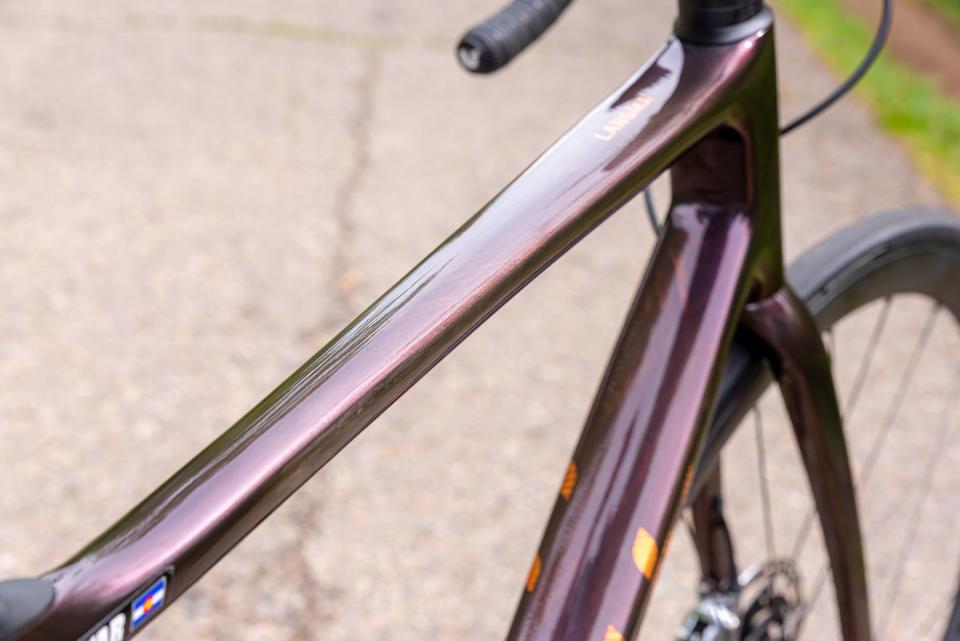
Liv Langma Advanced SL – Frame Details
It’s no secret that Liv is part of Giant Bicycles. But while it’s tempting to think of the Liv Langma as simply the latest Giant TCR (which launched a little more than a year ahead of the new Langma) with different paint and parts, that’s not the whole story.
And for the record, Liv’s team doesn’t like the comparison, as Jen Audia of Liv’s global marketing team explained in an email:
“Respectfully, as a separate, standalone brand, we would rather be compared to previous generations of our bikes, to the industry standard or key competitors (Specialized and Trek as our report card details), Audia said. “It seems that in nearly every review and article we are framed as, ‘Liv, the sister brand to Giant Bicycle’ or our bikes are directly compared to similar Giant versions. To my knowledge, I don’t believe there is a single TCR review that mentions Liv or the Langma, and I don’t believe Giant’s product marketing manager ever receives these types of questions from an editor.”
Audia’s frustration and position are understandable. But in fairness to editors and consumers worldwide, the Giant and Liv frames come out of the same Giant-owned factories—Giant/Liv is one of a small number of brands to own its carbon manufacturing facility, and one of the only bike brands to make its own carbon composites. Plus there are apparent similarities in the frame details and shapes, and even some overlap in the marketing materials that make the comparison inevitable.
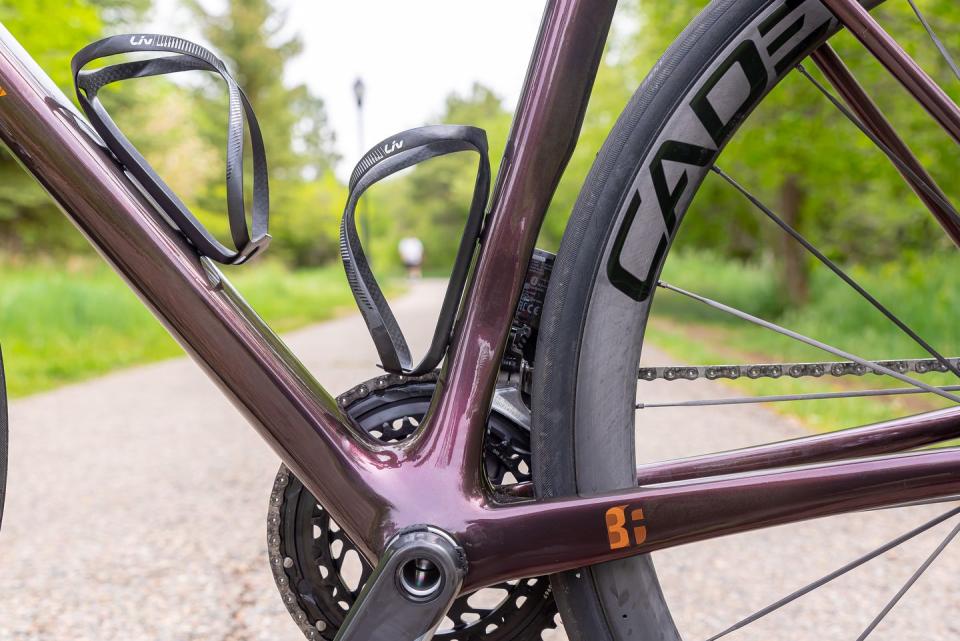
For example, both the Langma and the TCR use “Advanced-Grade Composite” and employ “truncated ellipse” tube shapes for aerodynamic gains, and both have a “symmetric” fork design claimed to improve lateral stiffness, improve aerodynamics, and reduce weight.
But while there are some strong similarities between the Langma and TCR, the two frames are different. Geometry is distinct, with the Langma being a shorter and taller fit based on reach and stack numbers.
Diving into the more minor details, the new Langma Advanced SL frame is 60 grams lighter than the previous generation and features “21 percent greater transmission stiffness,” Liv claims. The new fork features a 50 percent increase in lateral stiffness, and the bike now fits wider tires—up to 32mm.
Regarding the comparisons to Trek and Specialized Audia referenced above, Liv claims that the “Transmission Stiffness” (which takes into account the fork’s lateral stiffness and the frame’s pedaling stiffness) of the Advance SL Disc frame is almost 12 percent greater than the Specialized Tarmac SL7, and a bit more than 26 percent greater than the Trek Émonda SLR.
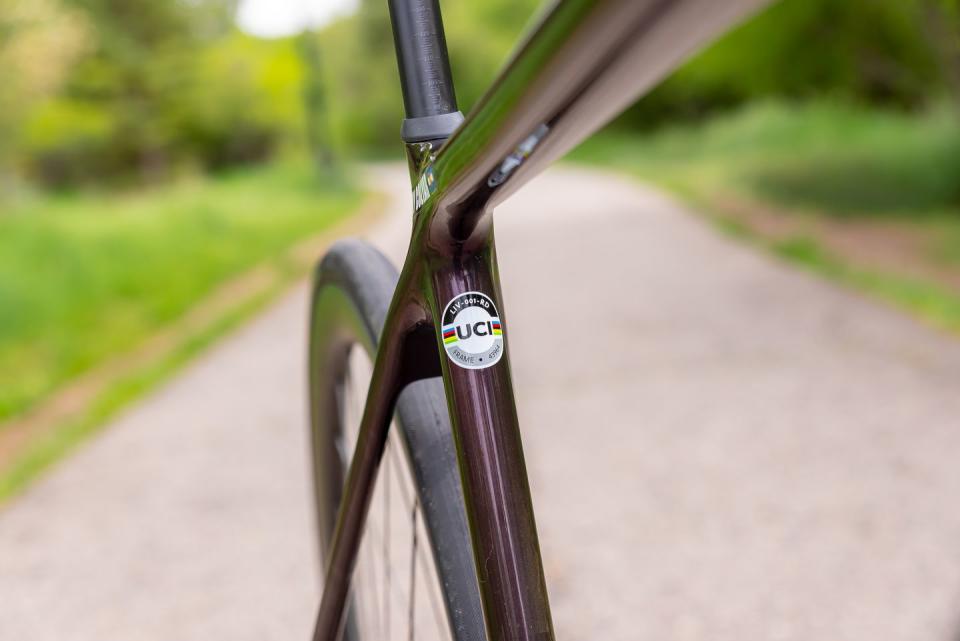
On the scale, the Langma Advanced SL frameset (frame, fork, and hardware) weight (claimed) comes in 104 grams lighter than the Tarmac SL7; Trek’s Émonda SLR frameset is 32 grams lighter than the Langma.
Combining the stiffness and weight numbers, Liv claims the Tarmac SL7 is 19 percent less efficient while the Émonda SLR is 24 percent less efficient than the Langma’s stiffness-to-weight ratio.
A couple of features carried forward from the previous generation are the press-fit 86 bottom bracket and the 1¼-inch upper (1½-inch lower) steerer diameter.
The latter means there isn’t the same breadth of stem options available as there are for the more commonly used 1⅛-inch standard. However, Giant, Liv, and Canyon all use 1¼-inch steerers and offer house-brand stem options, with aftermarket offerings from Ritchey, Zipp, and PRO. Someone makes almost every length and rise option a rider might need. It just might not be from your favorite stem brand.
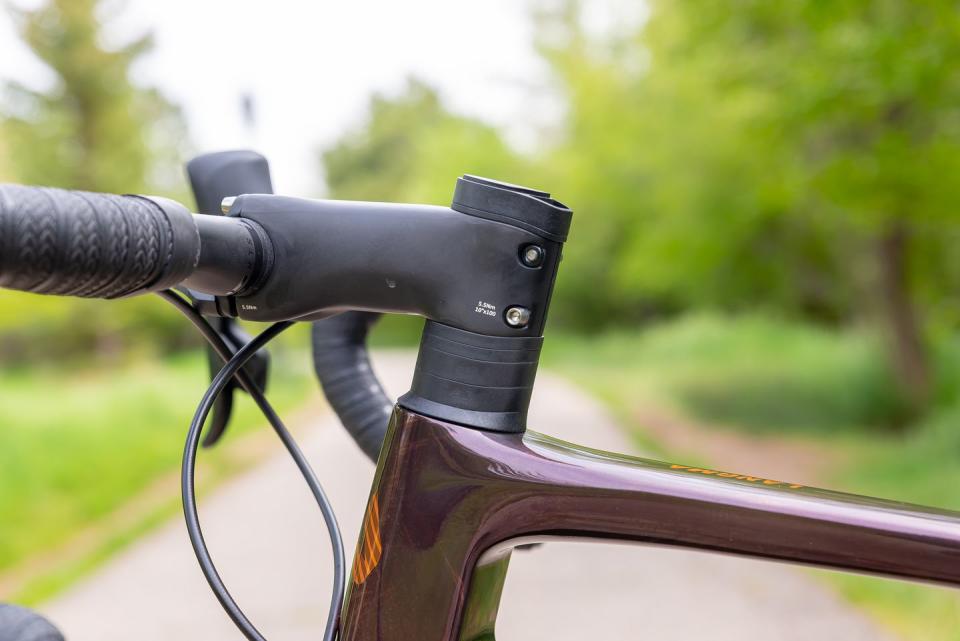
Staying at the front end: Liv does not use fully internal disc-hose routing from bar to the brake caliper. This is an aerodynamic penalty relative to a bike with full internal routings like a Tarmac SL7 and the Trek Émonda but makes changing/replacing the Liv’s bar and stem much (much) easier.
A detail that doesn’t carry forward on the new SL frame is the integrated seatmast. Instead, the new Langma SL frame employs a much more practical adjustable-height seatpost. This makes the Langma easier to pack for travel, easier to sell down the road, and eliminates any potential “Oh, shit,” moments that dog a seatmast that requires cutting.
Only the top-of-the-line Langma Advanced SL Disc Red reviewed here uses this Advanced SL frame. This frame is only compatible with electronic shifting: The other Langma frames have compatibility with mechanical shifting systems.
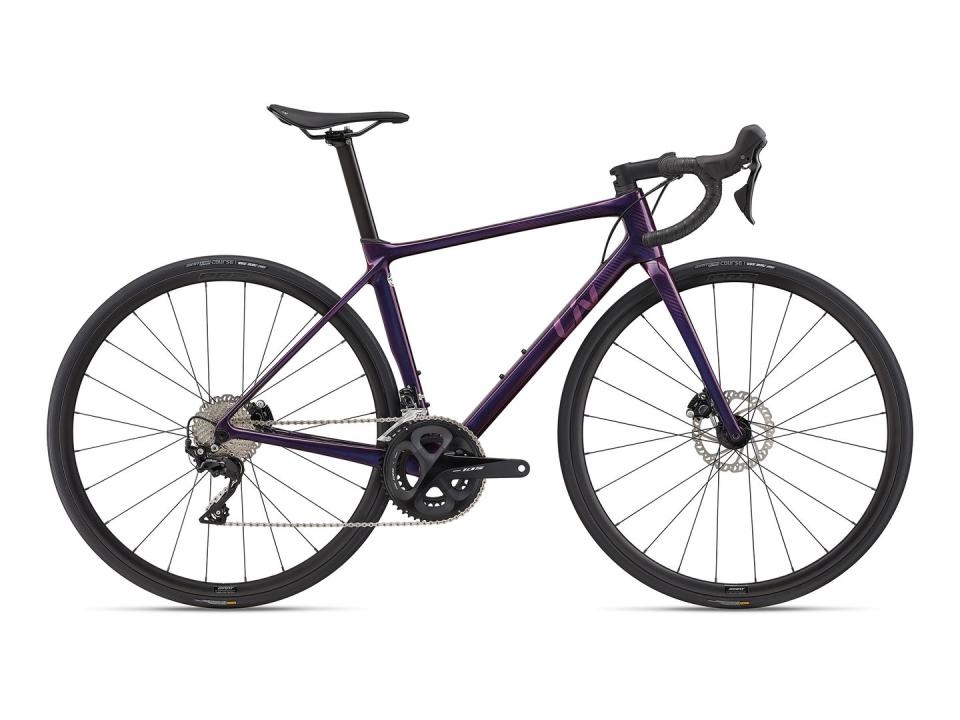
Liv Langma — Advanced and Advanced Pro Frames
Below the top-of-the-line Advanced SL frame, you’ll find the mid-tier Advanced carbon frames.
The significant difference between the SL and Advanced frame levels is the carbon- composite used to make the frame. The Advanced frame uses a lower-grade composite, while the Advanced SL uses the best composite available to Liv. The frames should essentially have the same characteristics, except for weight: You spend more to get a lighter frame.
Aside from the composite, the frames are almost identical, save for drivetrain compatibility: The Advanced frames gains compatibility with mechanical shifting systems.
Liv further splits the Advanced frames into two platforms: Advanced and Advanced Pro. The primary difference between these two frames is the fork and head tube.
The Advanced Pro frame uses the same 1½- to 1¼-inch tapered steerer (and corresponding head tube) as the Advanced SL frame. No bikes with this frame come into the USA.
The Advanced frame uses a 1¼- to 1⅛-inch tapered steerer and corresponding head tube. This change likely reduces steering stiffness somewhat, but the rider gains more stem options.
Liv claims the new Langma Advanced’s frame has 6.6 percent more torsional stiffness and is 25 grams lighter than the first generation Langma Advanced frame, while the fork is a whopping 120g lighter than the first-gen Langma Advanced fork.
Compared to the first Generation Langma Advanced Pro frame, the latest generation has 6.6 percent more torsional stiffness, it is 25 grams lighter, and the fork is 30g lighter.
Liv Langma – Geometry
One of the most interesting and unique things about the Langma is Liv continues to employ women’s geometry. The Langma comes in five sizes: double extra small to large with all sizes rolling on 700c wheels. You can find the geometry numbers and component dimensions below.
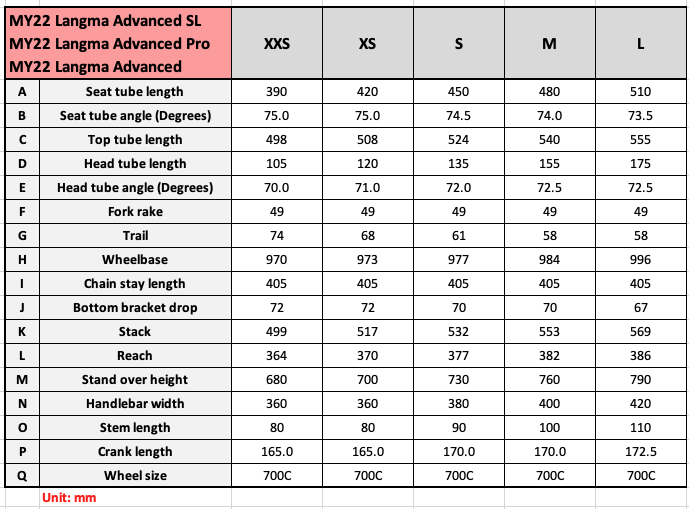
Two of Liv’s biggest competitors, Specialized and Trek, no longer employ “women’s specific” geometry on their top-end bikes, with the former stating that “Body proportions vary as much within a gender as between them.”
However, Liv declares, “Every Liv bike is designed to deliver the ideal geometry for a specific height range and the intended ride experience using women’s body dimensional data. We focus specifically on women’s data and women’s feedback to inform our design, development, and prototype process. This includes thousands of data points around women’s body dimensions as well as our professional athletes’ feedback during the prototype testing phase. All of this information is what allows Liv’s team of engineers to achieve the optimal geometry for riders. This translates to better fit, improved handling, and less fatigue for the rider.”
The likely truth—because it is true of any frame’s geometry—is that the Langma’s geometry, no matter a person’s preferred pronouns, will work great for some riders and less great for others. The best way to know if the Liv, or any other frame, will or won’t work for you is to get a professional bike fit and use that information to guide your decisions.
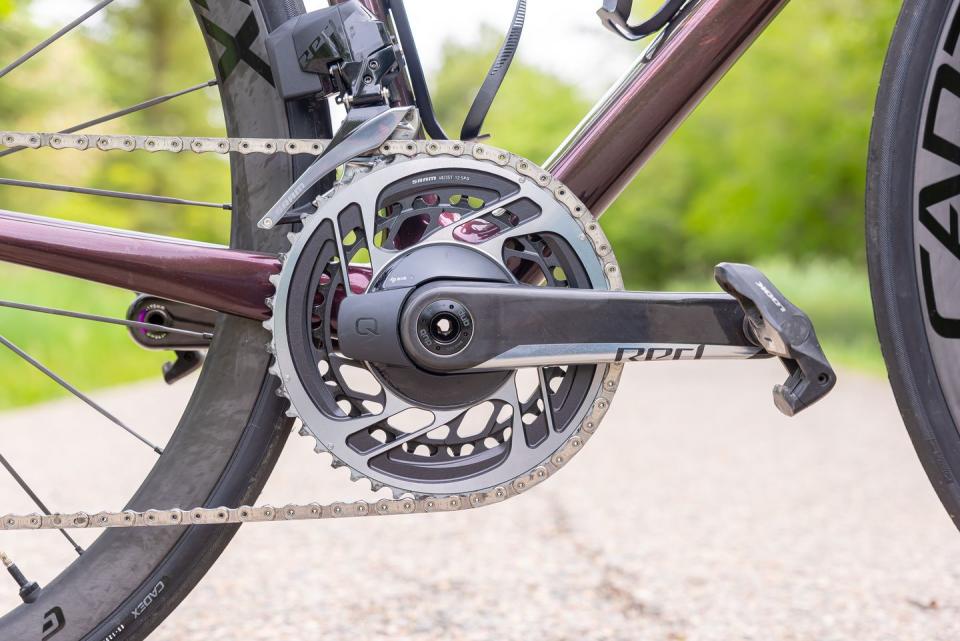
Liv Langma Advanced SL Disc Red — Build Kit
Liv dressed my top-of-the-line Langma review bike with premium parts. They include SRAM’s Red eTap AXS electronic wireless shifting (35/48 rings and a 10-33 cassette), Red hydraulic disc brakes, and the new 1,300-gram Cadex 36 wheelset with carbon rims, carbon spokes, and ceramic bearings.
One nice bonus on this model is it comes with SRAM’s Red power meter from the factory.
This is the first model to get the brand’s new Contact SLR carbon handlebar, which features “optimized drop and reach that’s customized for women’s measurements,” they claim. The bar’s dimensions vary with frame size: XXS gets a 36cm bar, XS a 36cm, S a 38cm, M a 40cm, and L a 42cm.
The stem is an all-carbon Giant SLR. Like the bar, its length varies with frame size: 80mm for the XXS and XS, 90mm for the S, 100mm for the M, and 110mm for the L. Liv throws in a computer mount with an optional camera/light attachment that cleanly integrates into the stem’s faceplate.
The seatpost is a 141-gram (claimed) Giant Variant SLR with chi-chi titanium hardware. Atop it is Liv’s Alacra SLR CS saddle with carbon rails, a short nose, and a generous cutout.
Liv Langma – Models
Liv launches the new Langma with a line of 11 models. All models have disc brakes: there are no rim brake offerings.
Not all models are available in all regions. The table below breaks down model availability and prices by region.
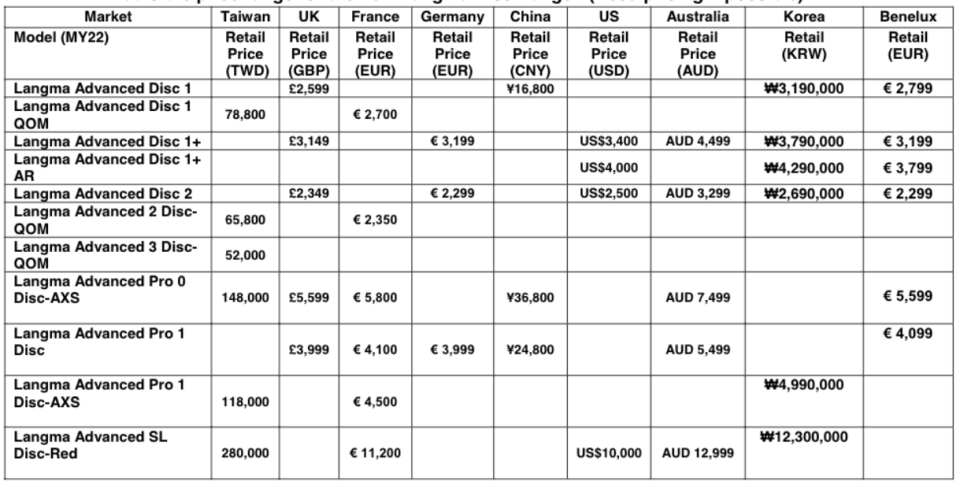
Liv offers four models in the USA: three Advanced models ($2,500, $3,400, and $4,000) before a massive jump up to the top-of-the-line Advanced SL Disc Red reviewed here ($10,000). Find details of the USA models below.
You Might Also Like

